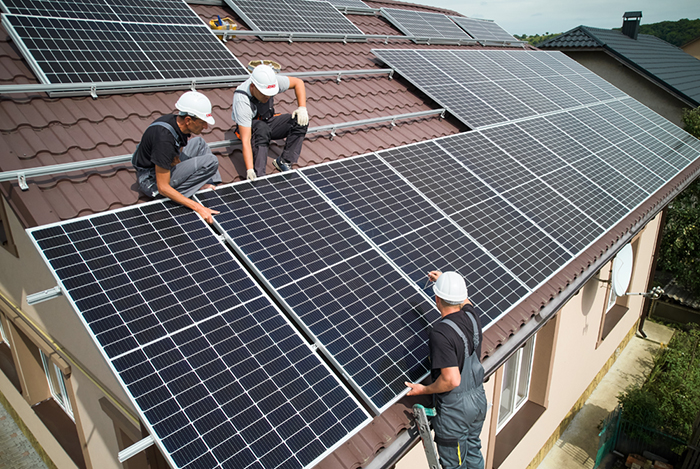Ensuring effective waterproofing is critical in the distributed photovoltaic (PV) installation process to prevent leaks and damage. Introducing PV power into ordinary homes allows people to generate their own electricity, earn income from their investment in power stations, receive state subsidies for power generation, and essentially make money from the sun. The sooner you pay attention to this opportunity, the sooner you can benefit!
With strong support from national and local governments, distributed PV systems are becoming more widely used and represent an important future development direction. However, as distributed PV power generation is relatively new to the market, the quality of design and construction can vary significantly. One frequently overlooked issue is roof waterproofing. If the installation damages or omits the waterproof layer, leaks can easily occur, which not only affects the PV system but also the normal use of the homeowner's property.

Today, let's discuss the issue of waterproofing PV roofs.
How to Ensure a Waterproof Roof
The general principle for roof waterproofing is to guide water off the roof rather than block it, ensuring rainwater is properly diverted to prevent leaks. When installing PV systems that require perforations in the existing roof, the approach should be tailored to the specific situation. Here are some methods based on different roof types:
Concrete Flat Roof Waterproofing
For new buildings with concrete flat roofs, bolts should be embedded in the design, and the roof should be waterproofed according to standard practices. For existing buildings, when setting the PV module base, a waterproof layer should be laid over the base and the metal embedded parts. The area around the foundation bolts should be sealed, and an additional waterproof layer can be added beneath the base to prevent rainwater from reaching the structural layer even if the top leaks.
Using Chemical Anchoring Bolts
For existing buildings with flat concrete roofs, the thickness of the protective layer should be confirmed if using chemical anchoring bolts to fix the bracket. For precast floor slab roofs with a higher bearing capacity, a concrete layer can be poured on the roof, and after curing, chemical anchoring bolts can be used to secure the bracket. For roofs with shingles, the hole depth should be confirmed. After fixing the chemical anchor bolt, the area where the bolt passes through the shingles should be treated with waterproof sealant. Chemical anchoring bolts have advantages such as high bearing capacity, fatigue resistance, aging resistance, and no swelling force or extrusion stress on the matrix.
Metal Roof Waterproofing
For metal roofs, the steel structure of the PV system should be fixed to the building's main steel structure through the original waterproof layer and profiled steel plate, ensuring steam insulation, heat preservation, and waterproofing. Key construction tasks include rust prevention, sealing, and applying waterproof coating to the base and periphery. For local leaks in metal roofs, high-quality neutral weather-resistant sealant should be used to plug them. If the color steel plate is severely corroded, it should be replaced before installing PV components.
Conclusion
In summary, when installing PV modules, it's essential to consider not only sunlight exposure and shading but also load-bearing, drainage, and waterproofing. Proper waterproofing is vital to ensure the longevity and efficiency of both the PV system and the homeowner's property.







